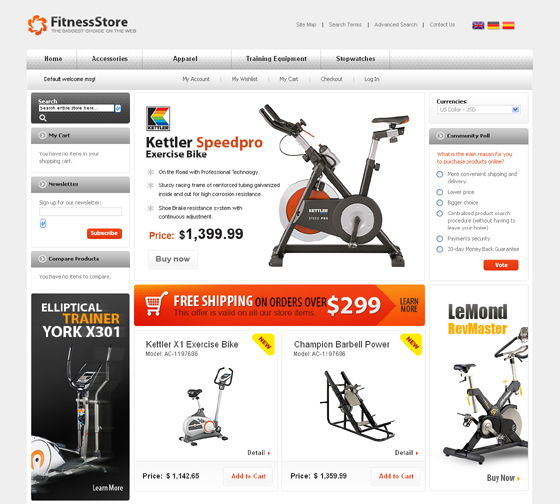7 SEO Tips to Build a Search Engine Friendly eCommerce Site
If you’re running an eCommerce website, then surely you’re looking for a way to find more customers and drive more traffic to your website. The same rules that apply to SEO for general websites or blogs also can be applied to eCommerce sites.
However, there are other considerations as well, and it’s very important that you have a clear understanding about how to succeed specifically with SEO for an eCommerce website.
1. Always Have Unique Content – It’s usually all too easy to post some products on your website and use the “canned” manufacturer description that it comes with on your own pages.
However, this description is already going to be out there on the Internet, and if these aren’t your own unique products, then they are going to be found in many places.
That means when you post it, it’s nothing but duplicate content. So be sure to create your own unique content, change their descriptions around and separate yourself as unique and original in the eyes of the search engines.
2. Strive for Long-Tail Keywords – If you’re listing many different products on your eCommerce website, then you should strive to make use of as many potential long-tail keywords as possible.
That means you should include very specific and long keywords and descriptions for your product. That means, don’t just say “This pair of Levi’s jeans” but, “This pair of black size 34 Levi’s women’s jeans”, for example. Now you’re really getting narrow and long-tail, and can find some highly targeted traffic.
3. Internal Linking – Internal linking is often one of the most overlooked aspects of SEO, and that’s true for eCommerce sites too.
Never link to any of your pages by saying “click here” or “read more information” or anything else. Always have your internal links to your own pages have the actual page name or targeted keyword.
This will boost your pages’ alignment with those terms and phrases within the search engines. It will also provide a visually clear and easy to work with navigation for visitors, who instinctively click on the things they are actually interested in to find them.
4. Brand and Category Pages – Create as many potential landing pages for interested searchers and consumers as you can.
Some people might search for their jeans by brand, such as Levi’s. Others might search for style, such as baggy or boot cut, and others might search by color, size or a variety of other factors.
If you have landing pages that appropriately lead to the other specific products and categories for all of these different areas, then you can bring in much more traffic. Even you think it’s redundant, you will be improving your rankings greatly.
5. Proper META Tags for all Products – People running an eCommerce site often avoid differentiating between their META tags.
So all of the individual Levi’s jeans they have might have the title tag of “Levi’s Jeans”, and the same description of “Levi’s jeans for sale”. But this doesn’t provide any value to any of those pages.

Make each META title and description be different from the others, and have them all be as relevant as possible. Once again, strive for those long-tail keywords and phrases and always be unique.
6. Images and ALT Tags – Adding ALT tags to your images can help to provide you with a huge SEO boost.
The alt tag is what shows up on the page when the image doesn’t, but more importantly you are adding that text for an image on your website, and providing another way to help optimize your page for phrases you are targeting.
Now you’ll even turn up in the image results, and this is especially useful for products or services that people like to visually see.
7. Usability and Accessibility – Be sure that all of your products can be found easily, and that they all are accessible from your main website.
If your actual products are buried down 10 levels from your homepage, they will hardly receive any attention from the search engines, and you’ll also alienate visitors who have difficulty navigating your site.
Always keep your products just a click or two away from home whenever it’s possible, and make it easy for individuals to maneuver around your navigation. Brand and category pages come in handy once again here.

